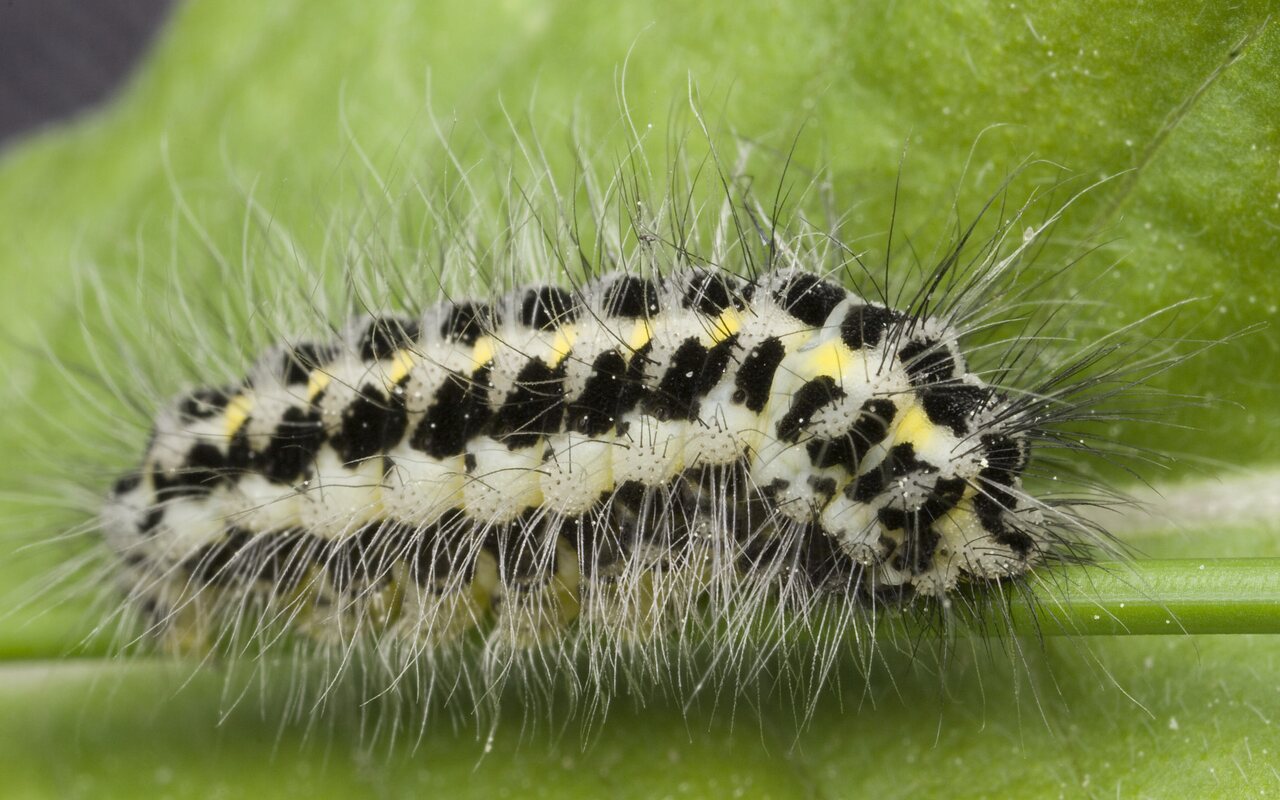
Zygaena lonicerae caterpillar · paprastasis marguolis, vikšras
- narrow-bordered five-spot burnet
- Hornklee-Widderchen, Klee-Widderchen, Grosses Fünffleckwidderchen
- paprastasis marguolis
- sausseržu raibspārnis
The forewings usually show five crimson to vermilion spots and a black basic colour, with a strong bluish or blue-green reflection. The third spot is smaller than the fourth one.
The moth flies during daytime from June to early August depending on the location. They suck nectar of the preferred blue violet flowers, such as on field scabious (Knautia arvensis), dove pincushion flower (Scabiosa columbaria), meadow knapweed (Centaurea jacea), panicle knapweed (Centaurea stoebe), creeping thistle (Cirsium arvense), ring thistle (Carduus).
The females lay eggs in July on the underside of leaves of the host plants or on plants that grow close to them. The eggs are pale yellow. The caterpillars reach a length of 19 to 28 millimetres. They are bluish green or pale yellow, with long pale hairs and a few rows of almost rectangular black spots.
The larvae feed on various low-growing plants, including Trifolium, Lathyrus species, as well as Vicia, Lotus corniculatus, Lotus uliginosus, Onobrychis viciifolia. The larvae eat until late summer and early winter, and continue to develop in the following year. At the end of May the caterpillars are fully grown. The not fully grown caterpillars overwinter a second time. The caterpillars pupate in an elongated or spindle-shaped yellowish or white cocoon on grasses and other plants.
Sparno ilgis – 15,5-19 mm. Dažniausiai Lietuvoje sutinkamas marguolis. Juos galima surasti įvairiuose biotopuose: pajūrio miškuose, pušynuose, tiek spygliuočių, tiek lapuočių miškuose, tiek mišriuose miškuose bei pamiškėse, sausapievėse, vidurinio drėgnumo pievose, stepinėse pievose, paupiuose, paežerėse. Šių drugių dažniausiai randama po keletą. Paprastieji marguoliai skraido saulėtomis dienomis, o ūkanotomis dažniausiai tupi ant buožainės (Knautia) žiedynų. Šie marguoliai sutinkami birželio – liepos mėnesiais. Vikšrai išmarginti juodų taškų linijomis. Jų randama ant įvairių laukinių dobilų, raženių, esparcetų ir kitų augalų. Kokonas būna prisitvirtinęs išilgai smilgos ar kito žolinio augalo.
‥
0 comments
Add a comment